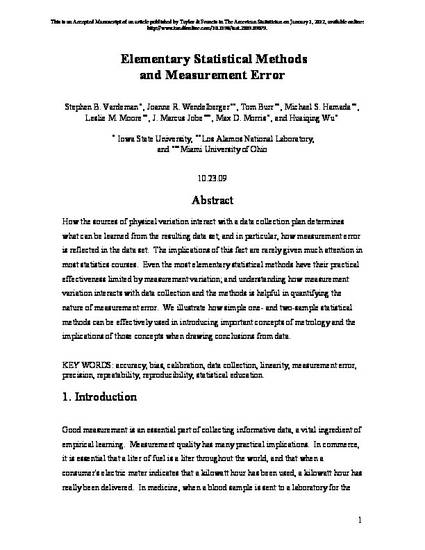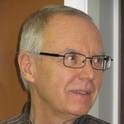
How the sources of physical variation interact with a data collection plan determines what can be learned from the resulting dataset, and in particular, how measurement error is reflected in the dataset. The implications of this fact are rarely given much attention in most statistics courses. Even the most elementary statistical methods have their practical effectiveness limited by measurement variation; and understanding how measurement variation interacts with data collection and the methods is helpful in quantifying the nature of measurement error. We illustrate how simple one- and two-sample statistical methods can be effectively used in introducing important concepts of metrology and the implications of those concepts when drawing conclusions from data.
Available at: http://works.bepress.com/stephen_vardeman/18/

This is an Accepted Manuscript of an article published by Taylor & Francis in The American Statistician on January 1, 2012, available online: http://www.tandfonline.com/10.1198/tast.2009.09079.